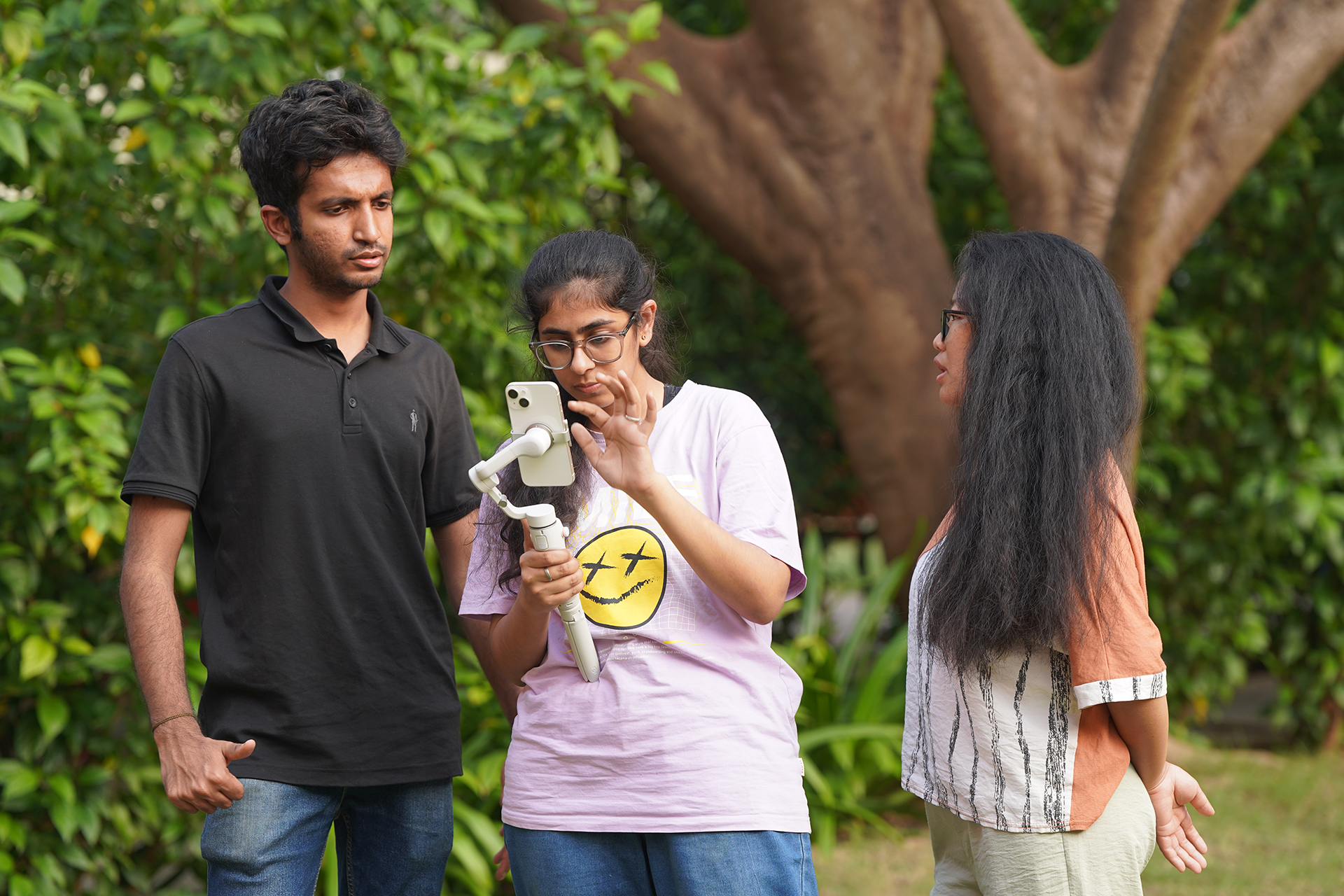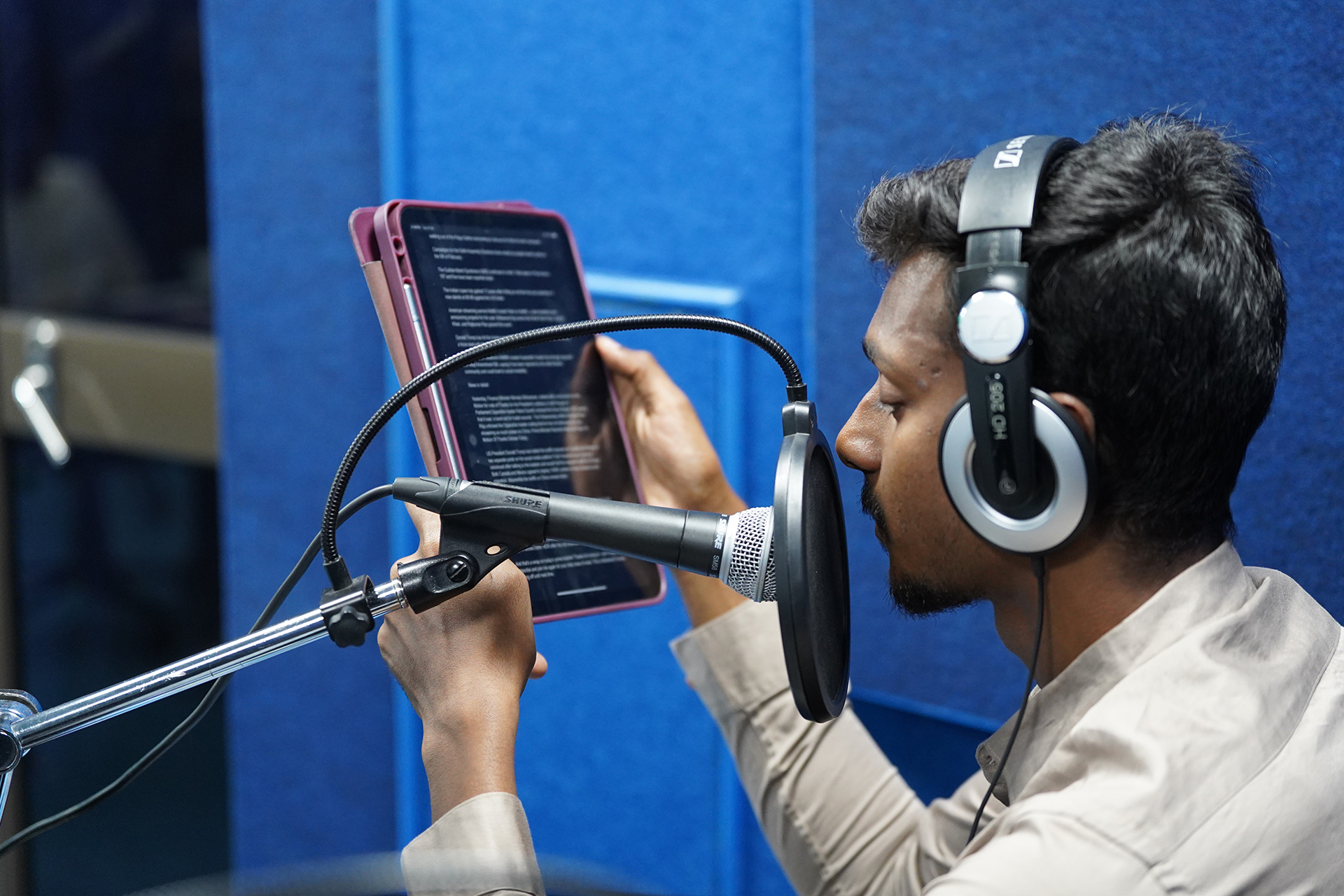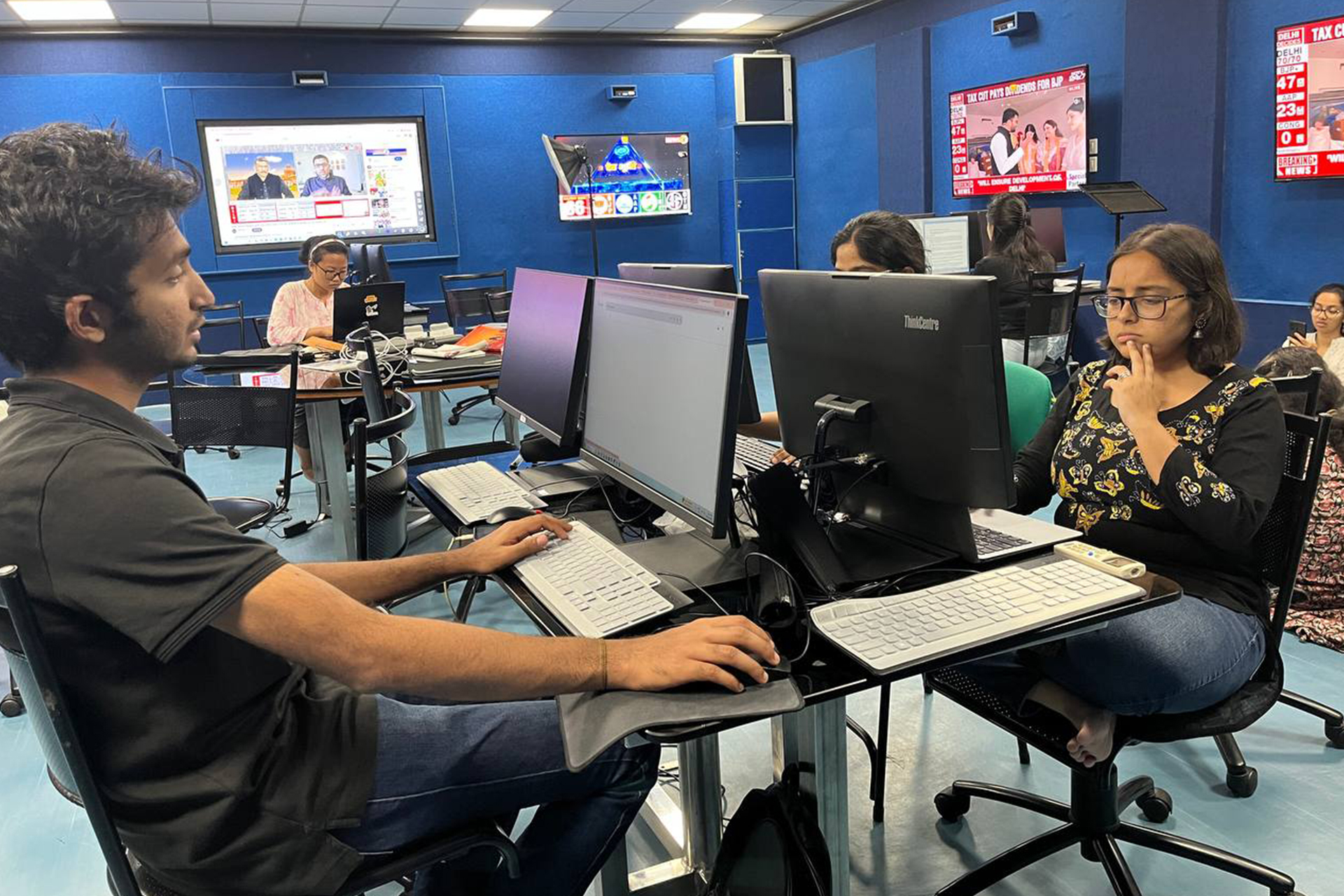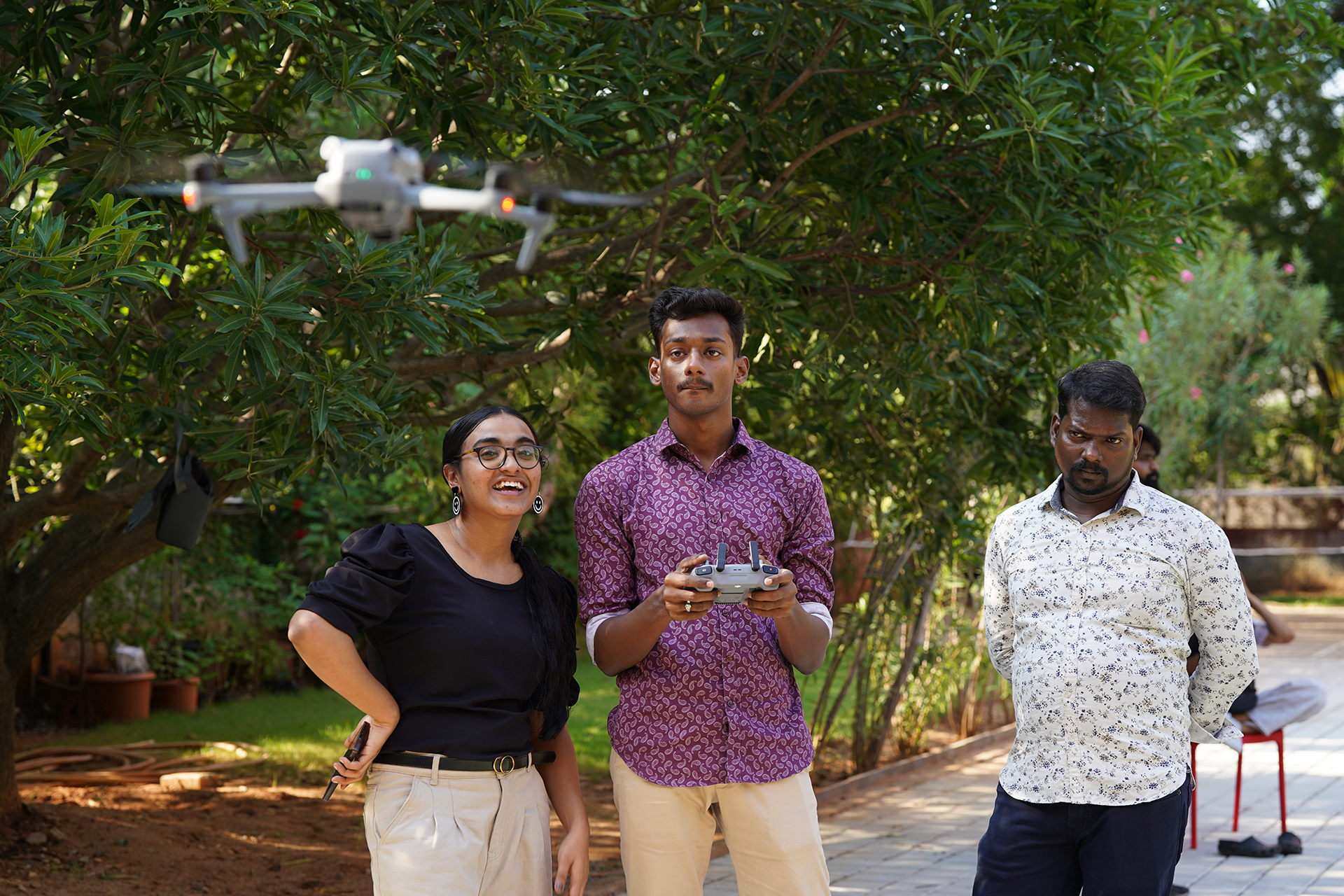Education and training over two semesters in ACJ are designed to equip students with wide-ranging skills to perform confidently in today’s technology-driven media-neutral newsrooms where news is processed for the print, the web and the broadcast platforms.
Under the Print platform where text and photographs are the main components, students are first encouraged to keep themselves updated with news, paying close attention to the content, structure, and language of the different types of stories in mainstream newspapers and their multimedia platforms.
Through lectures, classroom exercises and field assignments, students are taught to gather news, write and edit it in the clear, precise and grammatically accurate language required for newspaper readers. The curriculum includes instruction in identifying the newsworthiness of a story idea, writing different kinds of leads for stories and substantiating statements with examples, quotes and data. While editing copy, students are taught to correct factual and grammatical errors, ensure clarity, avoid jargons, tighten sentences without losing information or changing the meaning, keep out defamatory content and compose headlines.
Students also pick up page design and layout concepts for a newspaper.
Students are then taught to enhance their news-gathering, news-writing and editing skills in an incremental manner. They also move on to writing editorials and opinion pieces, in-depth news reports, long-form features and profiles. In these deadline-driven modules, they learn to make a written pitch for a story idea and then write the feature/report with descriptive elements and detailed reportage.
Students create their own pages from scratch with their own stories and pictures. They learn to use and create page stylesheets, ensure news hierarchy, crop photographs, write picture captions, and design and produce pages before deadlines.
Multimedia/Digital Component
Students are trained to become fully integrated digital-savvy multimedia journalists who can deliver the same news content across different platforms — text, digital, and audio-video — so that they can fit seamlessly into the emerging media ecology of convergence. The course delivery will be through a combination of classroom lectures and exercises.
Initially, the students will learn the basics of news gathering and reporting for the digital platform through field assignments that will help them put to practical use the skill learnt during the classroom sessions.The fundamentals of news writing and editing will be adapted to the requirements of the digital media, both in terms of content and writing style. Students will learn to package text, image, audio and video inputs and present them on the Web using multiple tools in the state-of-the-art Integrated Newsroom.
Students will be trained to delve deep into the possibilities of innovative storytelling techniques with the help of digital and other tools, including mobile phones and drones, and social media, without compromising the core journalistic skills.
Focus will be on imparting and developing cutting edge storytelling skills, with an integrated approach to content creation, editing and publishing on multiple platforms. The component also includes training in Virtual Reality (VR), Augmented Reality (AR) storytelling, Drone Journalism and Gamification.
Students will be helped in developing skills for producing core news, opinions and editorials and feature packages with emphasis on SEO compliance and optimisation for the digital platform. They will be trained in leveraging social media for content creation and dissemination, besides using various fact-checking techniques, which have become very important in this age of fake news and dubious content on both social media and news platforms.
The Video Journalism Module
The ACJ’s Video Journalism module trains students to be proficient in all aspects of the format – the demands of the medium, writing for the visual medium, reporting, camera techniques, audio techniques, video editing techniques, on-camera presentation techniques, live multi-camera studio production and live remote production using the latest Wirecast technology.
In the Writing module, students are taught how to write the spoken word using simple, conversational language and how to write to the visual.
Students learn all about news value and how to identify and report a news story visually in the Reporting module. They learn on-camera live news reporting as well as producing news packages. Students are given hands- on training in all the aspects of producing news features – pre-production, production and post-production. Students are sent out to produce real stories.
The Camera Techniques module imparts hands- on training on how to shoot video using mobile phones as well as field cameras. Students are taught visual grammar – composition, shot sizes, movement. They get trained in shooting video sequences, piece-to-camera, sound bites, interviews. They also learn about recording audio when shooting video – recording ambience, sound bites, piece-to-camera.
During the Video Editing Techniques module, students are given hands-on training on all aspects of post-production using the latest digital tools - organising video and audio clips; video editing using multiple visual tracks such as video, titles, graphics; creating transitions; laying multiple audio tracks such as ambience, voice-over, effects, music; mixing all audio and video tracks for final export.
Students get training on multi-camera news show Live Production in the ACJ's 1,200 sq ft state-of-the-art four-camera television studio. Students, working in smaller groups, are trained to produce deadline-driven news shows simulating a newsroom with national, international, regional, sports, business and weather desks. They take up roles of News Editor, Desk Editor, News Anchor, News Producer, Live Reporter, Cameraperson, Sound Recordist, Floor Manager, and run a newsroom. The news shows will have in-vision and out-of-vision reporter news packages, live reports, live interviews, discussions, news analysis and so on.
Apart from live studio production, students get training in the ACJ’s state-of-the-art remote production system that uses the Wirecast technology. Set up during the time of the Covid-19 pandemic, the ACJ introduced the Wirecast - a popular live video streaming solution - in combination with other tools such as Zoom and Team Viewer, to train students online in camera techniques, video and audio editing, studio roles and protocols, enabling live television news show production by students located in remote locations. The ACJ uses the Wirecast technology to train students to produce a live news show with live reports from across the city and from different parts of India and South Asia.
The Audio Journalism Module
The Audio Journalism module trains students to be proficient in all aspects of Podcasting as a storytelling medium in journalism. This includes:
Writing for podcasts - how to write for the ear, script writing techniques for audio journalism, how to craft different podcast narratives, story structure, narrative arcs and so on
Audio storytelling techniques – how to engage the audience using immersive storytelling techniques
Voice culture and narration techniques - developing vocal presence and clarity for narration, modulation, pacing, and emphasis in delivering stories, voice exercises and practical tips for effective narration
Recording and audio editing techniques using hands-on exercises on audio editing software
Audio interviewing techniques
Exploring different podcasting niches within journalism, developing a compelling podcast concept
Podcast branding and promotion
Understanding analytics and measuring success and potential monetisation and funding strategies
Working from a state- of -the- art digital audio studio, students learn the protocol for live audio production. They acquire the skill sets for creative audio productions, including nuanced sound editing, sound layering, mixing of tracks, effective voice-over techniques, location presentations and interviews, laying background tracks and evoking mental pictures with voice and sound effects.
Students get the opportunity to create and present a final podcast project with multiple episodes.
Integrated Digital Newsroom
The ACJ has an Integrated Digital Newsroom to produce stories, combining text, video and audio The state-of-the-art newsroom has multiplatform bays with software and hardware for processing text, photographs, audio bits and video clips into a seamless multimedia product. The work in progress is monitored real time on an interactive screen. Students also track news through the television screens and strong internet connectivity. The newsroom is equipped with cutting-edge production equipment, including 360 degree cameras, mobile journalism kits, and VR headsets.
The ACJ has several other labs that have workstations with licensed, industry-standard writing and software for multimedia production work. The labs provide access to news agency material including reports and photographs, besides a host of other resources, including those that enable students to work from remote locations.





